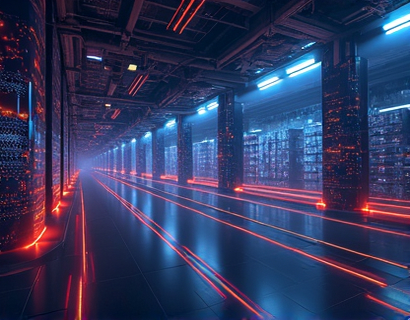Aquaculture Business Software: Revolutionizing Operations and Resource Management for Industry Leaders
In the rapidly evolving landscape of aquaculture, business owners and managers face unique challenges that demand innovative solutions. The industry, characterized by its reliance on water-based environments for fish, shellfish, and other marine organisms, requires meticulous management of resources, operations, and environmental factors. Advanced software solutions have emerged as pivotal tools, offering a comprehensive approach to streamline operations, boost productivity, and optimize resource management. These technologies are not just enhancing efficiency but are also providing essential insights that help aquaculture businesses stay competitive in a market driven by sustainability and profitability.
Enhancing Operational Efficiency
One of the primary benefits of implementing aquaculture business software is the significant improvement in operational efficiency. These systems automate routine tasks, reducing the time and effort required for manual data entry and monitoring. For instance, feeding schedules, water quality parameters, and stock health can be monitored in real-time, allowing for immediate adjustments as needed. This level of automation ensures that operations run smoothly, minimizing human error and maximizing productivity.
Moreover, the integration of Internet of Things (IoT) devices with aquaculture software enables seamless data collection from sensors placed in aquaculture facilities. These sensors monitor critical parameters such as temperature, pH levels, dissolved oxygen, and ammonia levels, providing continuous feedback to the management system. This real-time data allows for proactive management, ensuring optimal conditions for aquatic life and preventing potential issues before they escalate.
Optimizing Resource Management
Resource management is a critical aspect of aquaculture, given the finite nature of water and feed resources. Advanced software solutions offer robust tools for managing these resources efficiently. For example, feed management modules can calculate the optimal feed quantities based on the growth stage, species, and environmental conditions, reducing waste and lowering costs. Similarly, water management features help in monitoring and controlling water usage, ensuring that resources are used judiciously and sustainably.
Inventory management is another area where these software solutions excel. By tracking the stock of feed, equipment, and other supplies, business owners can maintain optimal inventory levels, reducing the risk of overstocking or stockouts. This not only saves costs but also ensures that operations are not disrupted due to a lack of essential resources.
Data-Driven Decision Making
The true power of aquaculture business software lies in its ability to transform raw data into actionable insights. Advanced analytics and reporting features enable managers to gain deep insights into various aspects of their operations. For instance, growth rate analysis can help in optimizing breeding programs, while financial reports can highlight areas of cost overrun or underperformance. These insights are invaluable for making informed decisions that drive business growth and sustainability.
Predictive analytics is another cutting-edge feature offered by these software solutions. By analyzing historical data and current trends, predictive models can forecast future scenarios, such as potential disease outbreaks or market price fluctuations. This foresight allows business owners to take preemptive measures, mitigating risks and capitalizing on opportunities.
Enhancing Sustainability and Compliance
Sustainability is a key concern in the aquaculture industry, with increasing pressure from consumers, regulators, and environmental groups to adopt eco-friendly practices. Aquaculture business software plays a crucial role in promoting sustainability by providing tools for monitoring and managing environmental impact. For example, carbon footprint tracking and waste management modules help in reducing the ecological footprint of aquaculture operations.
Compliance with regulatory standards is another area where these software solutions shine. They ensure that all operations adhere to local, national, and international regulations by providing checklists, alerts, and documentation management features. This not only helps in avoiding legal penalties but also enhances the reputation of the business as a responsible and compliant operator.
Improving Customer Satisfaction and Market Access
In a competitive market, customer satisfaction and market access are vital for long-term success. Aquaculture business software enhances these aspects by providing tools for managing customer relationships and market data. Customer relationship management (CRM) modules help in tracking customer preferences, order history, and feedback, enabling personalized service and improved customer retention.
Market access is facilitated through features that provide real-time market data, including price trends, demand forecasts, and competitor analysis. This information empowers business owners to make strategic decisions about production volumes, pricing, and marketing strategies, ensuring they remain competitive and responsive to market dynamics.
Scalability and Flexibility
As aquaculture businesses grow, their software needs evolve accordingly. Advanced aquaculture business software is designed to be scalable and flexible, accommodating the expanding needs of growing operations. Whether it's adding new species, expanding production facilities, or entering new markets, these systems can adapt seamlessly, providing a solid foundation for long-term growth.
Cloud-based solutions, in particular, offer the advantage of accessibility and ease of use. Business owners can access their data and management tools from anywhere, at any time, as long as they have an internet connection. This flexibility is especially beneficial for operations that span multiple locations or require remote monitoring and management.
Case Studies and Success Stories
Numerous aquaculture businesses have already experienced the transformative impact of implementing advanced software solutions. For instance, a large-scale salmon farming operation in Norway reported a 20% increase in productivity and a 15% reduction in feed costs after integrating an advanced management system. The real-time monitoring and automated feed management features allowed them to optimize operations and respond quickly to changes in water conditions.
Another example is a shellfish farm in the United States that utilized software to improve water quality management. By continuously monitoring and adjusting water parameters, they reduced mortality rates by 30% and increased overall yield. The data-driven approach enabled them to identify and address issues proactively, leading to significant financial savings and enhanced sustainability.
Future Trends and Innovations
The aquaculture industry is poised for further innovation, with emerging technologies set to enhance the capabilities of business software even more. Artificial Intelligence (AI) and machine learning are expected to play a larger role in predictive analytics and decision-making processes. AI-driven systems can analyze vast amounts of data to identify patterns and trends that humans might miss, providing even more precise insights and recommendations.
Blockchain technology is another area with potential applications in aquaculture. By ensuring transparency and traceability in the supply chain, blockchain can enhance consumer trust and compliance with regulatory requirements. Integrating blockchain with aquaculture software can create an immutable record of production, processing, and distribution, from farm to table.
Additionally, the integration of augmented reality (AR) and virtual reality (VR) could revolutionize training and operation monitoring. AR can provide real-time guidance to workers on complex tasks, while VR can simulate different scenarios for training purposes, reducing the risk of errors and improving overall efficiency.
In conclusion, aquaculture business software is not just a tool but a transformative force in the industry. By streamlining operations, optimizing resource management, and providing data-driven insights, these solutions empower business owners and managers to operate more efficiently, sustainably, and competitively. As the industry continues to evolve, embracing advanced software will be essential for staying ahead in a rapidly changing market.










































